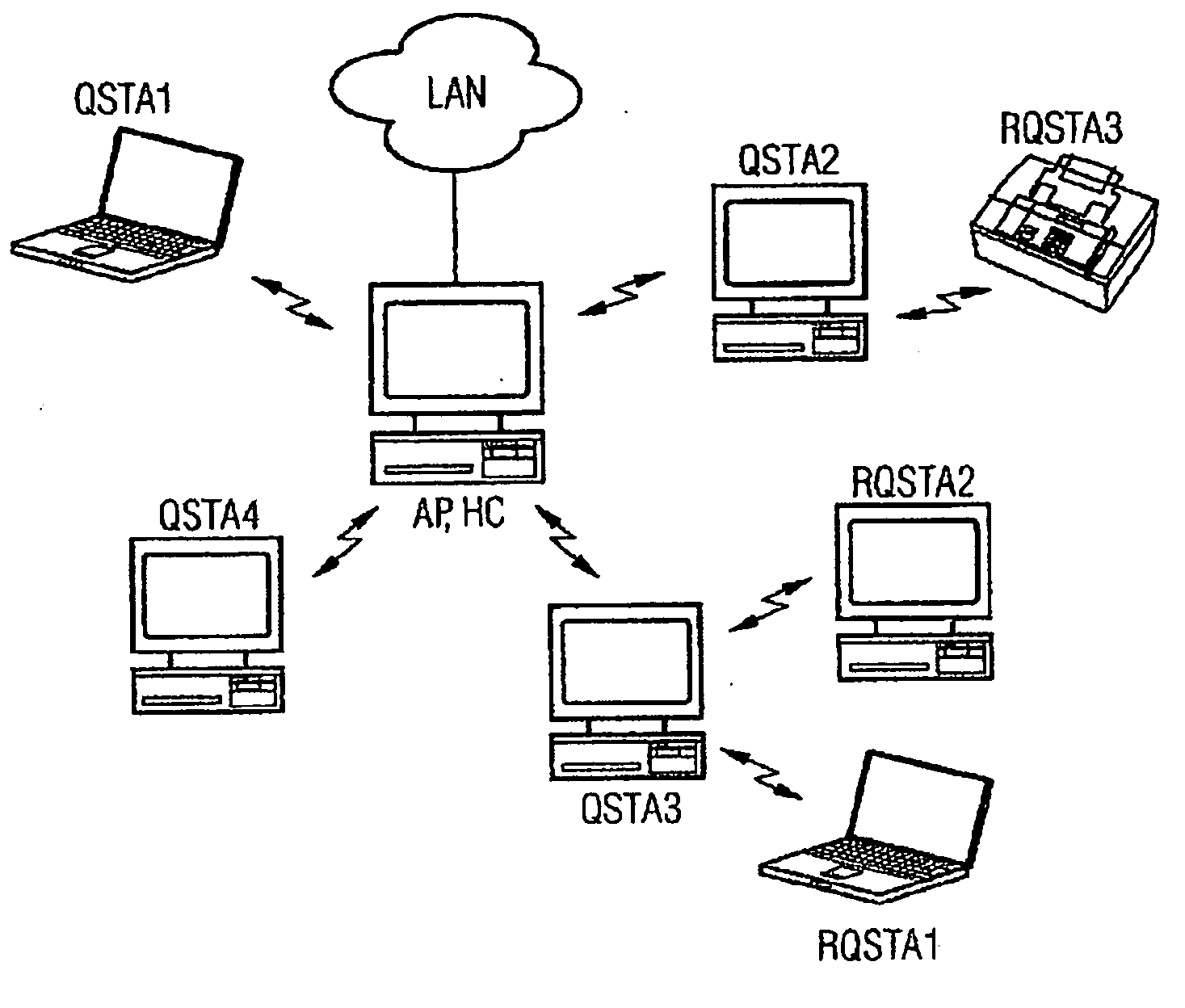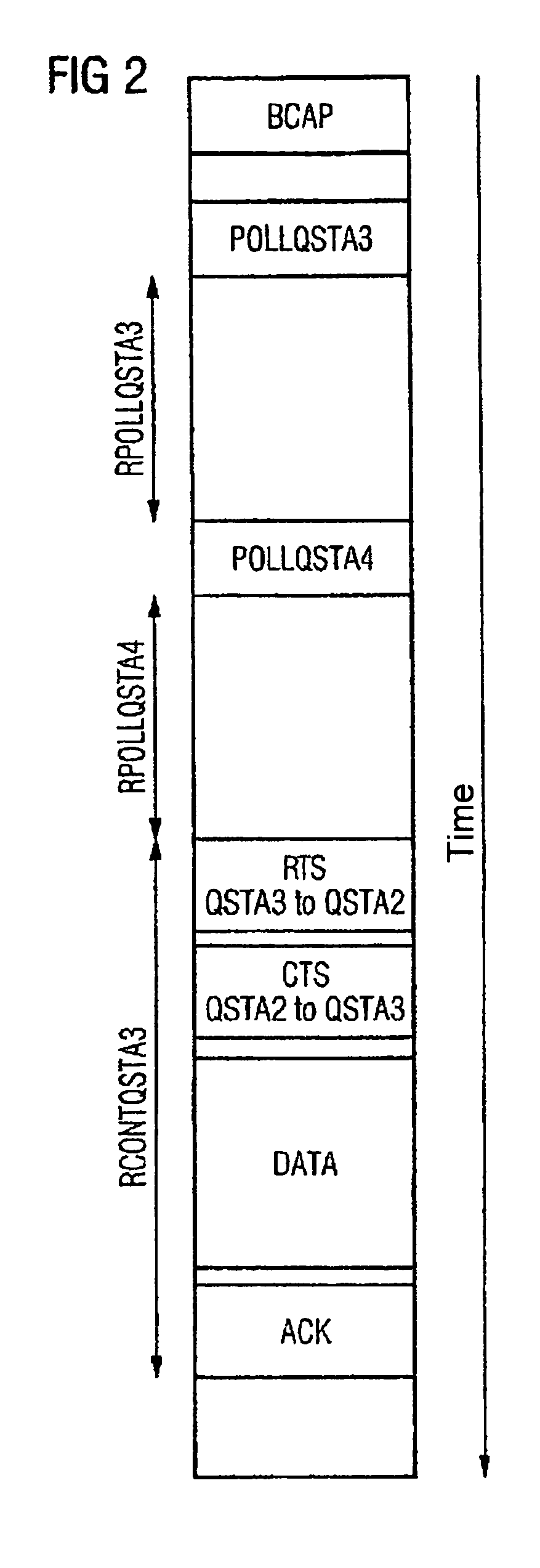Method for random accesses in a local network
a local network and random access technology, applied in the field of random access regulation in a radioassisted local network, can solve the problems of undesired interference signals from other radio stations, problems such as the inability of the ieee 802.11 standard to guarantee service quality, and achieve the effect of avoiding undesired collisions of random access signals
- Summary
- Abstract
- Description
- Claims
- Application Information
AI Technical Summary
Benefits of technology
Problems solved by technology
Method used
Image
Examples
Embodiment Construction
[0048] Reference will now be made in detail to the preferred embodiments of the present invention, examples of which are illustrated in the accompanying drawings, wherein like reference numerals refer to like elements throughout.
[0049] The embodiment refers to a radio-assisted local network according to the type of the IEEE 802.11e standard. FIG. 1 shows a section from such a radio-assisted local network, using the Hybrid Coordinator HC, which is connected to the functionality of an access point AP. The radio access point AP is connected to the local network LAN. Four Quality of Service Stations QSTA1, QSTA2, QSTA3 and QSTA4 are located in the radio coverage area of the Hybrid Coordinator HC.
[0050] If both the Quality of Service Station QSTA3 and the Quality of Service Station QSTA4 intend to send data, with a delay which is as short as possible and with a high Traffic Category, the Hybrid Coordinator HC will allocate the radio resources to these radio stations according to the re...
PUM
 Login to View More
Login to View More Abstract
Description
Claims
Application Information
 Login to View More
Login to View More - R&D
- Intellectual Property
- Life Sciences
- Materials
- Tech Scout
- Unparalleled Data Quality
- Higher Quality Content
- 60% Fewer Hallucinations
Browse by: Latest US Patents, China's latest patents, Technical Efficacy Thesaurus, Application Domain, Technology Topic, Popular Technical Reports.
© 2025 PatSnap. All rights reserved.Legal|Privacy policy|Modern Slavery Act Transparency Statement|Sitemap|About US| Contact US: help@patsnap.com



